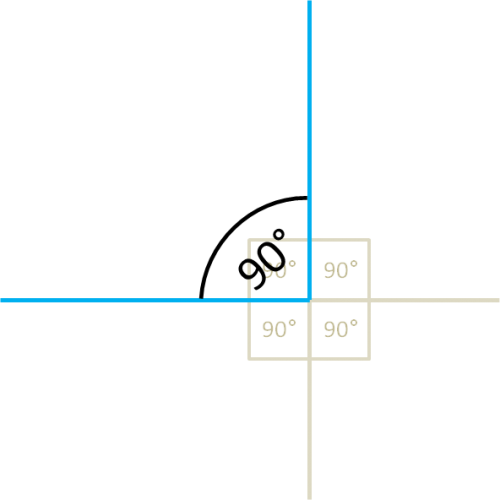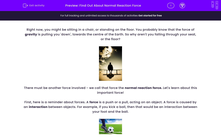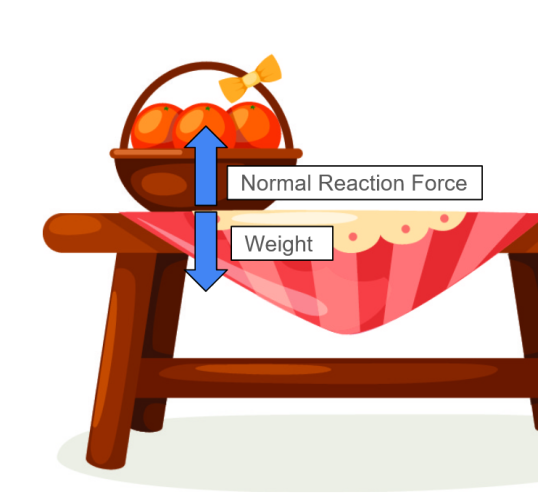Right now, you might be sitting in a chair, or standing on the floor. You probably know that the force of gravity is pulling you 'down', towards the centre of the Earth. So why aren't you falling through your seat, or the floor?

There must be another force involved - we call that force the normal reaction force. Let's learn about this important force!
First, here is a reminder about forces. A force is a push or a pull, acting on an object. A force is caused by an interaction between objects. For example, if you kick a ball, then that would be an interaction between your foot and the ball.

The normal reaction force is an example of a contact force. You might remember that a contact force is a force that happens when the interacting objects are touching.
So what is the normal reaction force? Whenever an object pushes onto a surface, like a wall or a chair, that surface pushes back. That's the normal reaction force!
Typically, the force pushing back is balanced with the force from the original object, cancelling it out.
The image above shows an example. A basket is on a table. The basket has weight, and that force is acting downwards.
The table provides a normal reaction force acting upwards. This force is the same size as the weight of the basket, and in the opposite direction.
Here is another example.
This blue object is leaning on a wall. The blue object is exerting a force on the wall, and the wall is exerting a normal reaction force back in the opposite direction. The two forces are the same size.
The normal reaction force is very common and you probably experience it very frequently. It explains lots of things, like why you don't fall through a wall when you lean on it!
There are some other names that people use for the normal reaction force that mean the same thing. Some people call it the normal contact force because this force is a contact force. It is also shortened sometimes to the normal force, or reaction force.
One other fact about this force that you may have noticed, is that the normal reaction force acts perpendicular to the surface. Remember, perpendicular means at an angle of 90°
In other words, the angle between the surface and the normal reaction force is always 90°

Now that we have learnt about this important force, let's check our understanding with some questions!










